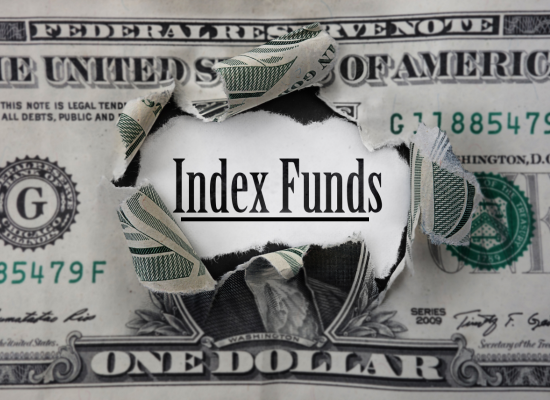Investing can feel overwhelming with so many options, but if you’re looking for a strategy that balances steady income, safety, and flexibility, a bond ladder might be the answer. For beginners and seasoned investors alike, a bond ladder is a smart way to manage risk while generating predictable cash flow. It’s especially appealing in today’s environment of fluctuating interest rates and persistent inflation. In this article, we’ll explain what a bond ladder is, how it works, why it’s beneficial, and how to build one, connecting it to your broader financial journey. Please note: this information is for educational purposes only and not financial advice.
What is a Bond Ladder?
A bond ladder is an investment strategy where you purchase a series of bonds with staggered maturity dates, creating a “ladder” of investments that mature at regular intervals. Instead of putting all your money into one bond that matures in, say, 10 years, you spread your investment across multiple bonds maturing in 1, 2, 3 years, and so on. As each bond matures, you reinvest the principal into a new bond at the longest maturity in your ladder, keeping the structure intact.
Think of it like planting a row of fruit trees that ripen at different times. Each tree (bond) produces fruit (interest payments) regularly, and when one tree stops producing (matures), you plant a new one to keep the harvest (cash flow) coming. This approach provides consistent income, reduces interest rate risk, and offers flexibility to adapt to changing economic conditions.
Bonds, as explained in What is a Stock and What is a Bond?, are loans you make to issuers like governments or corporations, earning interest until the bond matures. A bond ladder leverages this stability to create a diversified, predictable income stream.
How Does a Bond Ladder Work?
To understand a bond ladder, let’s walk through a simple example. Suppose you have $50,000 to invest and want to build a five-year bond ladder using U.S. Treasury bonds, which are low-risk and pay semi-annual interest.
- Divide Your Investment: Split your $50,000 into five equal parts of $10,000.
- Buy Bonds with Staggered Maturities: Purchase five Treasury bonds, each maturing in a different year:
- $10,000 in a 1-year bond (matures in 2026)
- $10,000 in a 2-year bond (matures in 2027)
- $10,000 in a 3-year bond (matures in 2028)
- $10,000 in a 4-year bond (matures in 2029)
- $10,000 in a 5-year bond (matures in 2030)
- Receive Interest and Principal: Each bond pays interest (e.g., 4% annually, or $400 per bond) semi-annually, providing steady income. When the 1-year bond matures in 2026, you get your $10,000 back.
- Reinvest the Principal: Use the $10,000 from the matured bond to buy a new 5-year bond maturing in 2031. Repeat this process each year as bonds mature, maintaining the ladder.
This structure ensures you have bonds maturing annually, giving you access to cash or the option to reinvest at prevailing interest rates. In May 2025, with Treasury yields around 4.5% for 5-year bonds, a ladder like this could generate about $2,000 in annual interest across the portfolio, plus regular principal returns.
Why Build a Bond Ladder?
A bond ladder offers several benefits, making it a valuable tool for investors seeking stability and flexibility:
- Steady Income: Bond ladders provide regular interest payments, ideal for retirees or those needing predictable cash flow to cover expenses. Unlike stocks, which may fluctuate, bonds offer fixed income unless the issuer defaults.
- Reduced Interest Rate Risk: If interest rates rise, existing bonds lose value. A bond ladder mitigates this by spreading maturities, allowing you to reinvest at higher rates as bonds mature.
- Protection Against Inflation: While bonds can lose purchasing power during inflation (see What is Inflation and Why is it So Bad?), a ladder lets you reinvest maturing bonds at new, potentially higher yields, helping offset inflation’s impact. You can also include Treasury Inflation-Protected Securities (TIPS) in your ladder for added protection.
- Flexibility: With bonds maturing regularly, you can access cash for unexpected needs, or reinvest based on your goals. This contrasts with locking all your money in a single long-term bond.
- Lower Risk: Using high-quality bonds, like U.S. Treasuries or investment-grade corporate bonds, minimizes default risk. Diversifying across issuers and maturities further enhances safety compared to a single bond investment.
How to Build a Bond Ladder
Ready to create your own bond ladder? Here’s a step-by-step guide for beginners:
- Define Your Goals and Timeline:
- Decide why you’re investing (e.g., income, retirement, or saving for a home) and how long your ladder should span (e.g., 5, 10, or 20 years). Shorter ladders (1–5 years) suit near-term needs, while longer ones (5–20 years) are better for long-term income.
- Assess your risk tolerance. Safer options like Treasuries are ideal for beginners, while corporate bonds offer higher yields but more risk.
- Choose Your Bonds:
- U.S. Treasury Bonds: Low-risk, backed by the government, with yields around 4–4.5% in 2025 for 1–10-year maturities.
- Municipal Bonds: Tax-exempt, good for high earners, but check the issuer’s credit rating.
- Corporate Bonds: Higher yields (e.g., 5–6%) but riskier; stick to investment-grade bonds (rated BBB or higher).
- TIPS: Adjust principal with inflation, offering protection in high-inflation environments.
- Open a Brokerage Account:
- Use platforms like Vanguard, Fidelity, or Schwab, which offer low-cost bond purchases. TreasuryDirect.gov is another option for Treasuries, with no fees.
- Ensure the platform supports individual bond purchases, as some focus on bond funds.
- Allocate Your Investment:
- Divide your capital across your chosen maturities. For a $25,000, 5-year ladder, invest $5,000 in bonds maturing each year from 2026 to 2030.
- Diversify issuers (e.g., mix Treasuries and corporate bonds) to reduce risk.
- Purchase the Bonds:
- Buy bonds through your brokerage, selecting specific maturities and yields. In May 2025, a 3-year Treasury might yield 4.2%, while a 5-year corporate bond yields 5.5%.
- Check bond ratings and avoid those below investment grade unless you’re comfortable with higher risk.
- Reinvest Maturities:
- When a bond matures, reinvest the principal in a new bond at the longest maturity in your ladder (e.g., a new 5-year bond). This keeps your ladder running and captures new rates.
- Monitor Your Ladder:
- Review annually to ensure your bonds align with your goals. If rates rise, reinvesting at higher yields boosts returns. If rates fall, your existing bonds hold their value.
Considerations and Risks
While bond ladders are relatively safe, they’re not risk-free:
- Interest Rate Risk: If rates rise, bond prices fall, though holding to maturity avoids losses.
- Default Risk: Corporate or municipal bonds may default, so prioritize high-quality issuers.
- Inflation Risk: Fixed-rate bonds lose real value if inflation outpaces yields; TIPS can help.
- Liquidity: Selling bonds before maturity may incur losses if market prices drop.
Final Thoughts
A bond ladder is a strategic way to invest in bonds, offering steady income, reduced risk, and flexibility in uncertain markets. By spreading investments across staggered maturities, you can navigate high interest rates and inflation while building a reliable income stream. Start small, choose quality bonds, and reinvest wisely to make your ladder work for you. For personalized guidance, consult a financial advisor to tailor a bond ladder to your goals.


